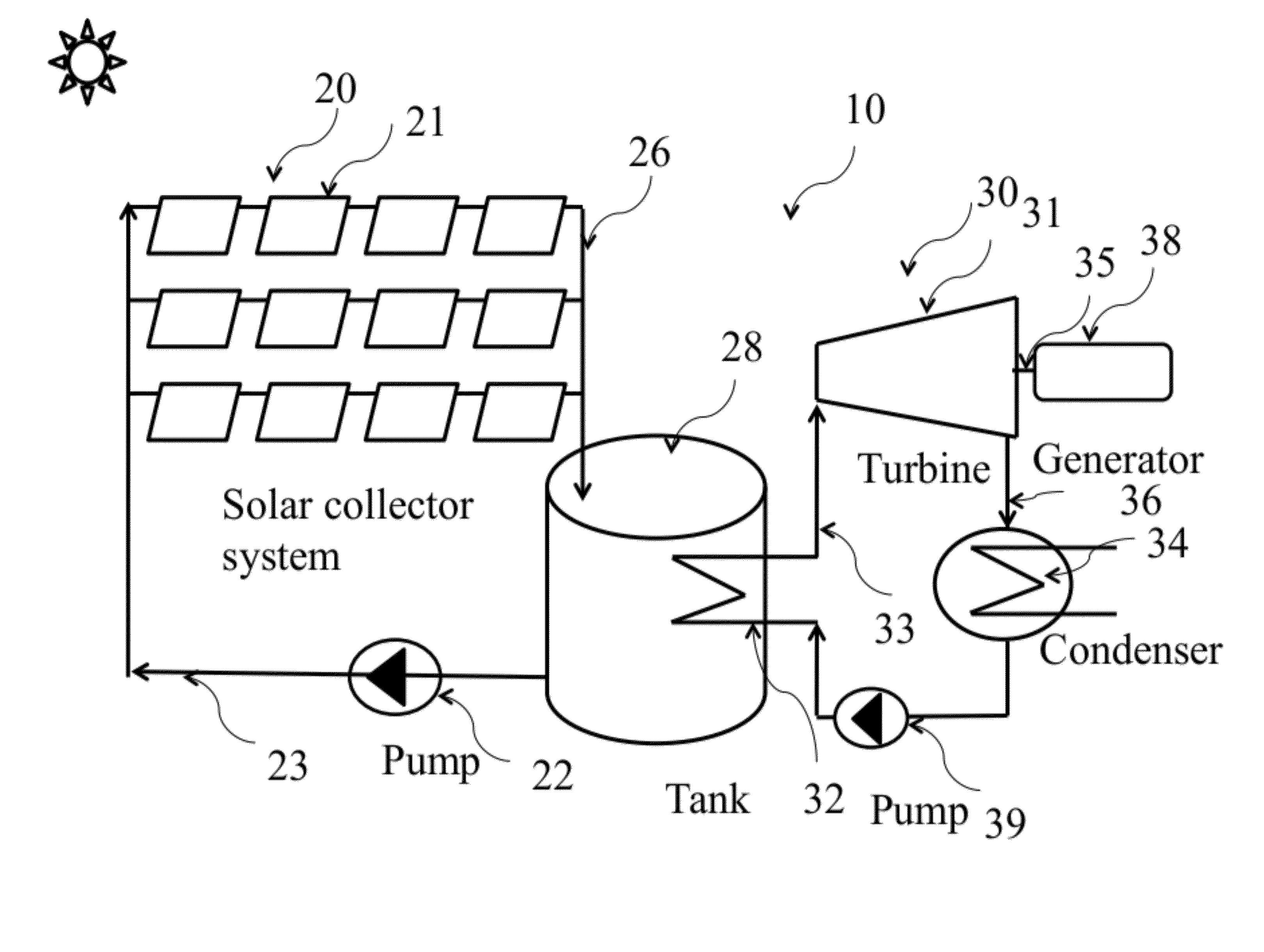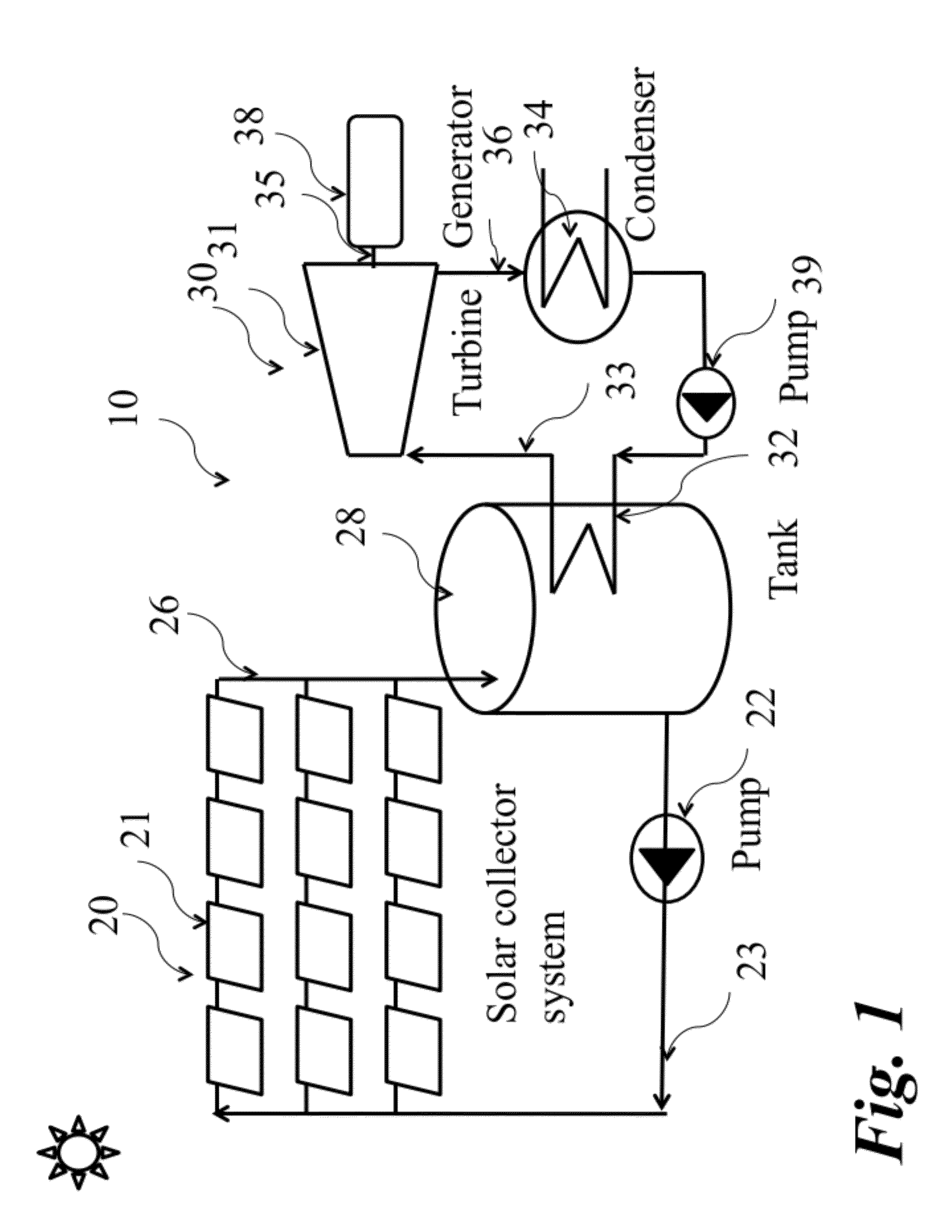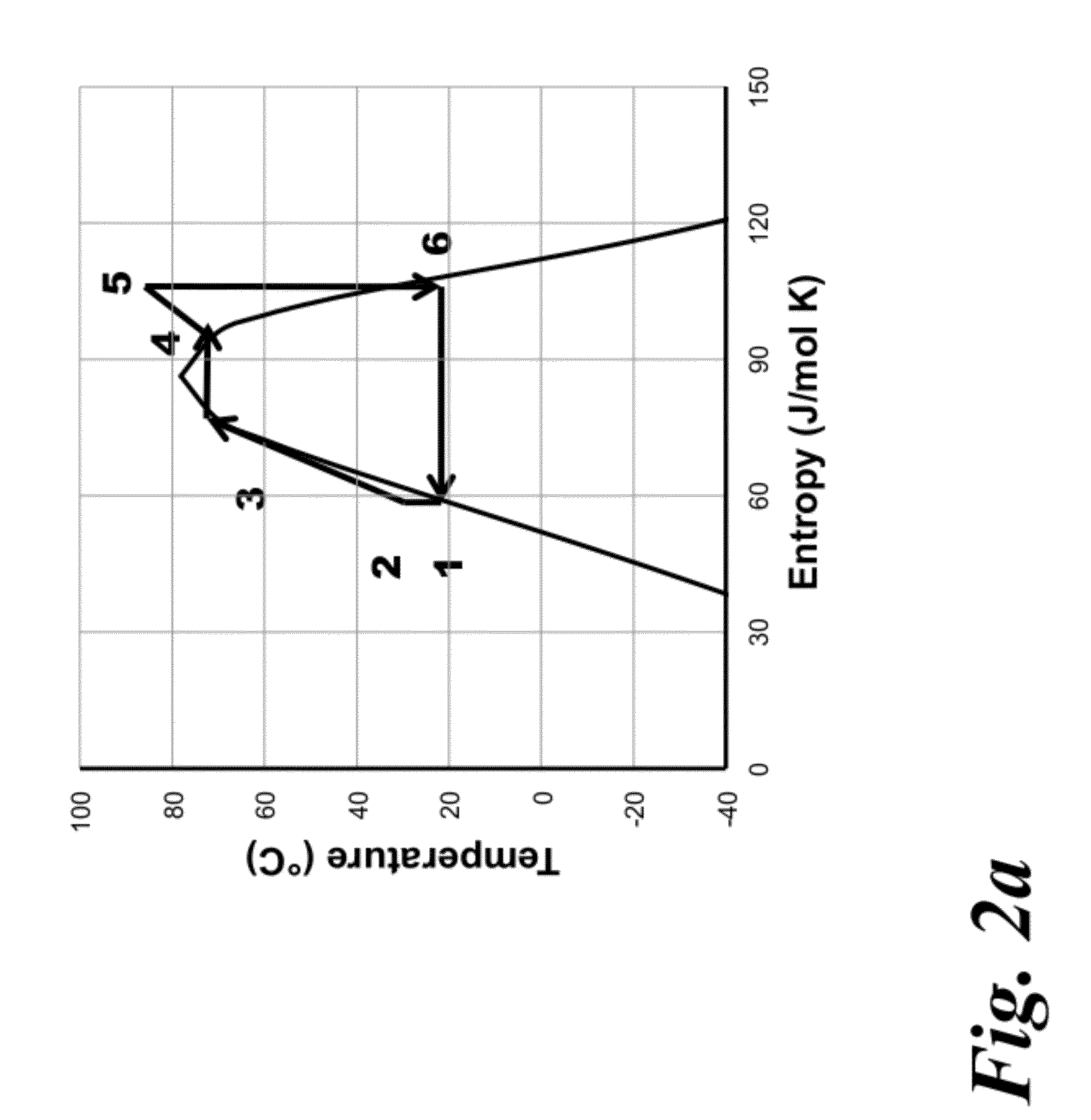Low temperature rankine cycle solar power system with low critical temperature hfc or hc working fluid
a solar power system and working fluid technology, applied in solar heat collectors with working fluids, sustainable buildings, solar heat devices, etc., can solve the problems of limited success, high cost, and half the earth is in darkness, and achieve reliable, cost-effective ways.
- Summary
- Abstract
- Description
- Claims
- Application Information
AI Technical Summary
Benefits of technology
Problems solved by technology
Method used
Image
Examples
Embodiment Construction
[0046]The present invention utilizes, in some forms, the free and limitless energy of the sun to produce thermal energy and electricity. The scale of commercial installations of the present invention can be tailored to the need, ranging from small stand alone systems for residential and small business use to intermediate sized plants for plant or factory use to massive assemblies design to supplement the supply of electricity or to mitigate against if not, eliminate an electrical energy crisis, such as the recent one in Japan. The present invention is economical to install and maintain, and is reliable and not maintenance-intensive, and is efficient and cost effective to operate and does not pollute the environment.
[0047]Using the present invention, businesses, industrial plants, retail and office buildings, homes, farms and villages can produce their own electrical power, and avoid one of the large costs of doing business today, the ever-escalating price of purchased electrical pow...
PUM
 Login to View More
Login to View More Abstract
Description
Claims
Application Information
 Login to View More
Login to View More - R&D
- Intellectual Property
- Life Sciences
- Materials
- Tech Scout
- Unparalleled Data Quality
- Higher Quality Content
- 60% Fewer Hallucinations
Browse by: Latest US Patents, China's latest patents, Technical Efficacy Thesaurus, Application Domain, Technology Topic, Popular Technical Reports.
© 2025 PatSnap. All rights reserved.Legal|Privacy policy|Modern Slavery Act Transparency Statement|Sitemap|About US| Contact US: help@patsnap.com



